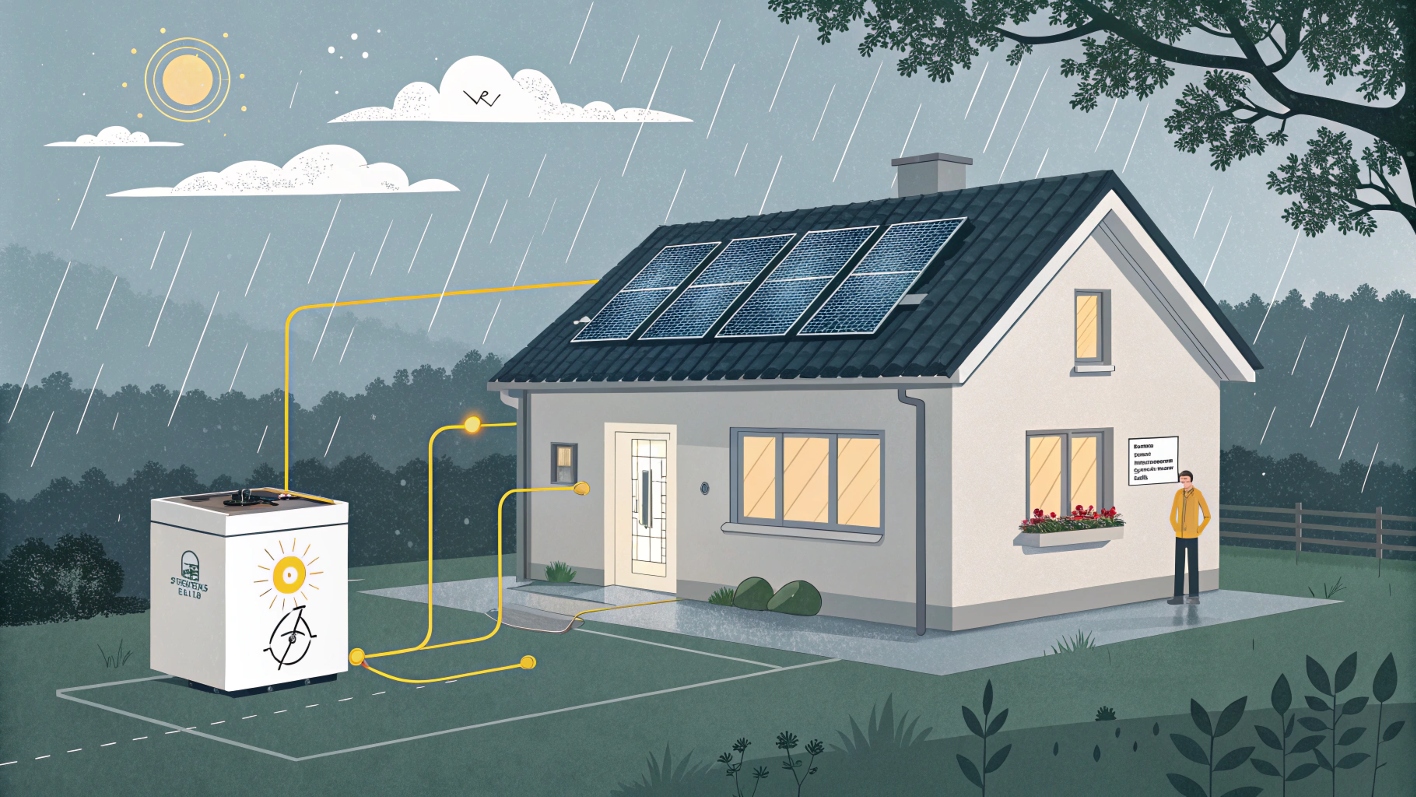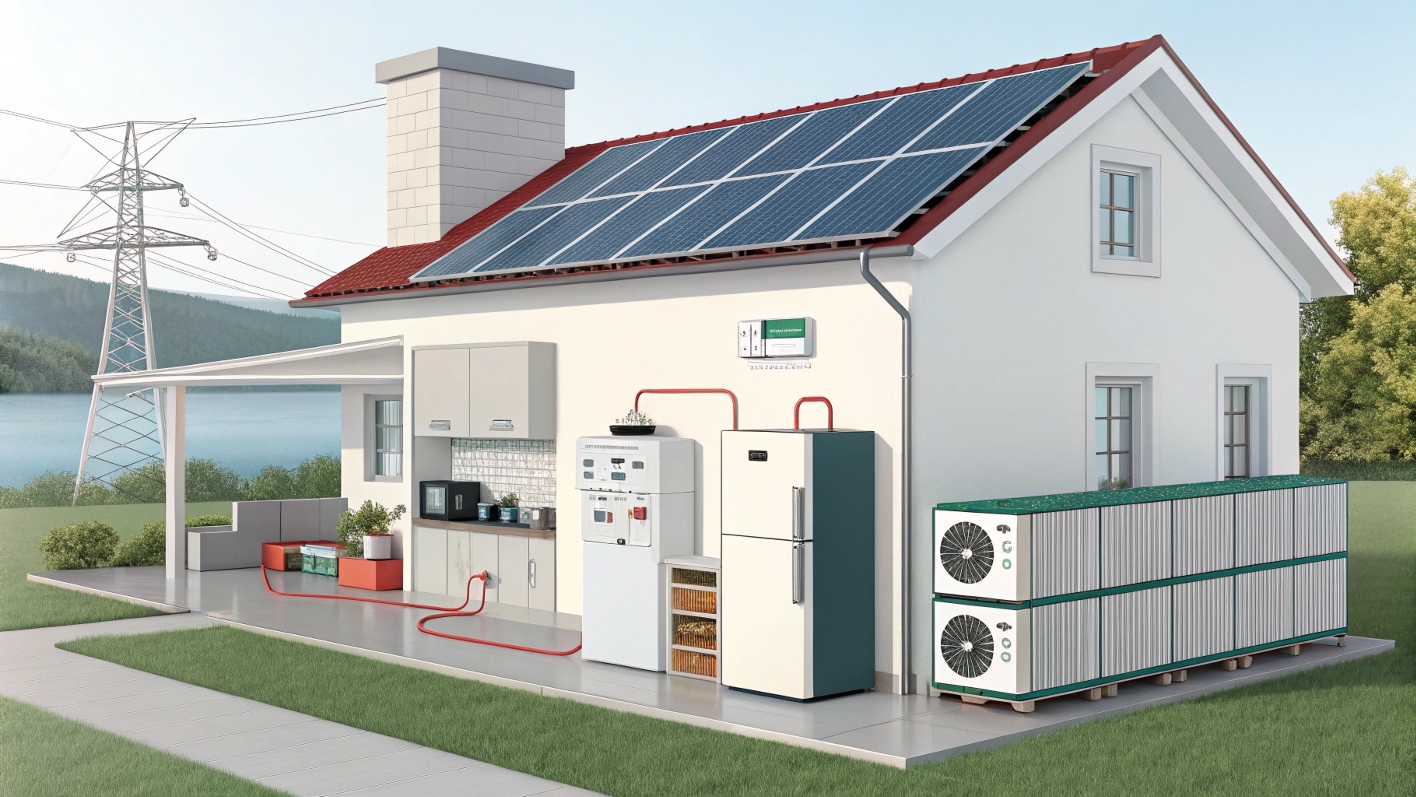빠른 답변
에너지 저장에 리튬 이온 태양열 배터리를 사용하는 이유는 무엇입니까??
ㅏ 리튬이온 태양전지 제공하기 때문에 에너지 저장에 사용됩니다.:
- 높은 에너지 밀도 컴팩트한 사이즈로
- 긴 수명 10~15년, 수천 주기
- 빠른 충전/배출 최고조의 태양을 포착하는 속도
- 심방전 손상 없이 (80–90% 국방부)
- 최소한의 유지보수 리드산에 비해
- 확장성 모듈식 설계를 통해
- 스마트 모니터링 그리고 강화된 안전 기능
1. 높은 에너지 밀도
왜 중요한가요?: 주거용 또는 상업용 설치에서는 공간이 제한되는 경우가 많습니다..
- 컴팩트한 설치 공간: 리튬 이온 배터리는 최대 100 Wh/kg 또는 그 이상, 납산의 경우 30~50Wh/kg 대비.
- 가벼운 중량: 벽이나 좁은 배터리 캐비닛에서 취급 및 설치가 더 쉬워졌습니다..
매끄러운, 우주 절약 솔루션, 우리를 탐구하십시오 LiFePO4 태양전지 모듈.
2. 긴 수명
왜 중요한가요?: 교체 횟수가 적다는 것은 장기 비용 절감과 낭비 감소를 의미합니다..
- 10–15년 근무 3,000~5,000회 전체 주기
- 일관된 용량 유지-위에 80 % 수천 사이클 후에
납축전지와 비교해 보세요., 비슷한 용도로 사용하는 경우 일반적으로 3~5년 정도 지속됩니다..
3. 높은 왕복 효율성
왜 중요한가요?: 사용 가능한 저장된 에너지를 최대화하여 그리드 의존도를 줄입니다..
- 까지 95 % 능률, 이는 충전/방전 중에 에너지 손실이 거의 없음을 의미합니다.
- 납축 시스템은 종종 단지 70-80 % 능률, 태양열 수확량을 더 많이 낭비하고 있습니다
효율성이 높다는 것은 생성된 태양 에너지의 더 많은 부분이 유용한 kWh로 전환된다는 것을 의미합니다..
4. 빠른 충전 & 심방전
왜 중요한가요?: 간헐적인 태양 피크를 포착하고 안정적인 백업을 제공합니다..
- 급속 충전 요금—일조량이 가장 많은 시간대에 에너지를 신속하게 저장합니다.
- 깊은 방전 기능 까지 80-90 % 국방부, 대만 50 % 리드산의 경우, 배터리의 정격 용량을 더 많이 제공합니다.
이러한 유연성을 통해 세포에 해를 끼치지 않고 필요에 따라 에너지를 끌어오고 교체할 수 있습니다..
5. 유지 보수가 적습니다
왜 중요한가요?: 유지 관리에 소요되는 시간과 비용이 절감됩니다..
- 물을 주지 않음 또는 전해질 점검이 필요함
- 균등화 비용 없음—간단한 충전/방전 루틴
- 최소 자체 방전, 유휴 기간 동안 배터리가 더 오래 충전되도록 유지
설치하고 잊어버리세요, 납축 배터리에 필요한 정기적인 유지 관리가 필요하지 않습니다..
6. 확장성 & 모듈성
왜 중요한가요?: 소규모로 시작하여 필요에 따라 성장할 수 있습니다..
- 모듈식 디자인 배터리 모듈을 병렬로 추가하거나 제거할 수 있습니다.
- 전압 옵션 (12 V, 24 V, 48 V) 모든 인버터 또는 독립형 설정과 일치
내년에는 더 많은 용량 필요? 전체 뱅크를 교체하지 않고도 리튬 배터리 모듈을 추가하기만 하면 됩니다..
7. 스마트 모니터링 & 안전 기능
왜 중요한가요?: 안정적인 작동을 보장하고 투자를 보호합니다..
- 내장형 배터리 관리 시스템 (비엠에스) 셀의 균형을 맞추고 과충전/과방전을 방지합니다.
- 온도 센서 그리고 결함 감지 안전성을 향상하다
- 원격 모니터링 실시간 진단을 위해 앱이나 웹 포털을 통해
시스템 상태 및 사용 패턴에 대한 최신 정보를 받아보세요, 문제가 발생하기 전에 문제를 파악하세요..
8. 친환경 & 시간이 지남에 따라 비용 효율적
왜 중요한가요?: 지갑과 지구를 위해 더 나은.
- 교체 감소 오래된 배터리에서 나오는 유해 폐기물 줄이기
- 효율성 향상 에너지 낭비와 공과금을 줄입니다.
- 장기 ROI: 더 높은 초기 비용에도 불구하고, 유지 관리가 적고 수명이 길어 수명 기간 동안 저장된 kWh당 리튬 이온 가격이 저렴해집니다.
처음에는 더 많은 투자를 하지만 교체 비용은 크게 절감됩니다., 에너지 손실, 유지 보수.
결론
리튬 이온 배터리는 탁월한 조합을 제공합니다. 성능, 내구성, 그리고 능률 태양 에너지 저장을 위해. 그들의 소형 디자인 그리고 고속 충전 그들의 긴 수명 그리고 스마트 안전 기능, 현대 태양광 시스템을 위한 최고의 선택입니다. 스토리지 업그레이드 준비 완료? 우리를 확인하십시오 LiFePO4 태양전지 그리고 완료 태양 저장 솔루션 신뢰할 수 있는, 유지 관리가 적은 전원 백업.
자주하는 질문
큐: 리튬 이온 배터리는 납축 배터리보다 태양열 저장에 더 좋습니다.?
ㅏ: 예. 더 높은 에너지 밀도를 제공합니다., 장수, 더 빠른 충전, 더 깊은 방전, 유지 관리가 적습니다..
큐: 리튬이온 태양전지는 얼마나 오래 지속되나요??
ㅏ: 일반적으로 10~15년 또는 3,000~5,000주기, 납축전지의 경우 3~5년에 비해.
큐: 나중에 리튬이온 배터리 뱅크를 확장할 수 있나요??
ㅏ: 전적으로. 모듈식 설계를 통해 더 많은 모듈을 병렬로 추가할 수 있습니다., 전압을 바꾸지 않고 용량을 늘리는 방법.



